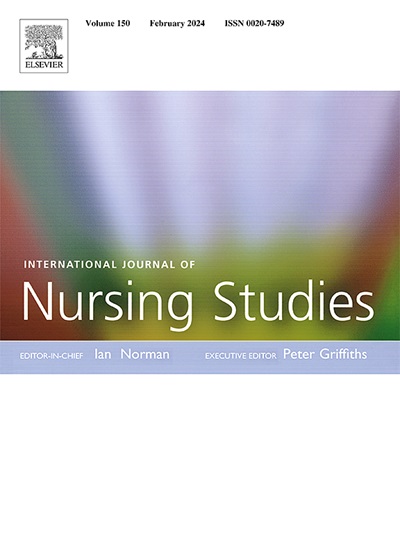Risk factors for pressure injuries in critical care patients: an updated systematic review
IF 7.1
1区 医学
Q1 NURSING
引用次数: 0
Abstract
Objective
To update a previously published systematic review identifying independent risk factors of pressure injury development in critically ill patients.
Design
Systematic review.
Methods
Five indexing databases (CINAHL, Cochrane Library, Dissertations & Theses Global, PubMed, and Scopus) were systematically searched for studies published between January 2017 and December 2024. Investigators independently screened studies, extracted data, and assessed study quality using an established appraisal tool. Evidence tables were created, and a narrative synthesis was conducted, organized by relevant domains and subdomains.
Results
This updated review included 33 studies (15 additional studies since the original review). Of these, 14 were rated as high quality, eight as moderate quality, nine as low quality, and 2 as very low quality. The most consistently identified independent risk factors were older age, limited mobility or activity, impaired perfusion, vasopressor use, and longer intensive care unit length of stay. Diabetes also emerged as a notable risk factor in several high-quality studies, although evidence was mixed. Inconsistent measurement approaches for nutrition and skin status continued to limit conclusive findings in these domains. Methodological heterogeneity across studies prevented meta-analysis and limited the generalizability of findings.
Conclusions
The new evidence found in this updated review reinforces previously identified risk factors – age, mobility limitations, poor perfusion, and vasopressor use – while identifying length of stay and diabetes as additional potential contributors to pressure injury risk. Comprehensive risk assessments for critically ill patients should prioritize these factors, especially in older adults with compromised mobility, poor perfusion, or receiving vasopressors. Future research should aim to standardize measurement approaches and explore how multiple risk factors interact to influence pressure injury development.
危重病人压力损伤的危险因素:最新的系统综述
目的更新先前发表的系统综述,确定危重患者压力损伤发展的独立危险因素。DesignSystematic审查。方法5个索引数据库(CINAHL、Cochrane Library、dissertation &;系统检索了2017年1月至2024年12月期间发表的论文。研究者独立筛选研究,提取数据,并使用既定的评估工具评估研究质量。建立证据表,并按相关领域和子领域进行叙事综合。这篇更新的综述包括33项研究(自原始综述以来增加了15项研究)。其中,14个被评为高质量,8个为中等质量,9个为低质量,2个为非常低质量。最一致确定的独立危险因素是年龄较大,行动能力或活动受限,灌注受损,血管加压剂的使用以及重症监护病房的住院时间较长。在一些高质量的研究中,糖尿病也成为一个显著的风险因素,尽管证据不一。营养和皮肤状况不一致的测量方法继续限制这些领域的结论性发现。研究方法的异质性阻碍了meta分析,限制了研究结果的可推广性。结论:在这篇更新的综述中发现的新证据强化了先前确定的风险因素——年龄、活动受限、灌注不良和血管加压药的使用——同时确定住院时间和糖尿病是压力损伤风险的额外潜在因素。对危重患者的综合风险评估应优先考虑这些因素,特别是对行动不便、灌注不良或接受血管加压药物治疗的老年人。未来的研究应着眼于标准化的测量方法,并探索多种危险因素如何相互作用影响压力损伤的发展。
本文章由计算机程序翻译,如有差异,请以英文原文为准。
求助全文
约1分钟内获得全文
求助全文
来源期刊
CiteScore
15.00
自引率
2.50%
发文量
181
审稿时长
21 days
期刊介绍:
The International Journal of Nursing Studies (IJNS) is a highly respected journal that has been publishing original peer-reviewed articles since 1963. It provides a forum for original research and scholarship about health care delivery, organisation, management, workforce, policy, and research methods relevant to nursing, midwifery, and other health related professions. The journal aims to support evidence informed policy and practice by publishing research, systematic and other scholarly reviews, critical discussion, and commentary of the highest standard. The IJNS is indexed in major databases including PubMed, Medline, Thomson Reuters - Science Citation Index, Scopus, Thomson Reuters - Social Science Citation Index, CINAHL, and the BNI (British Nursing Index).

 求助内容:
求助内容: 应助结果提醒方式:
应助结果提醒方式:


